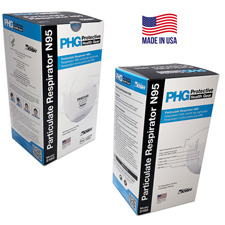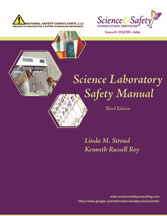| The Home page of ILPI's Safety Data Sheet (SDS) Resource, the leader in SDS information since 1995! | |
| The history and philosophy behind this resource. | |
| A curated collection of books and reference materials concerning Safety Data Sheets and closely related topics. | |
| Paste your plain text SDS into the SDS-Demystifier, and it will be converted into a hypertext-enriched document with links to detailed explanations of each key term. | |
| An extensive list of frequently asked questions about Safety Data Sheets including regulations, content, compliance, and more. | |
| A humorous take on Safety Data Sheet jargon. Fill in the blanks on our entry form to generate a personalized Unsafety Data Sheet to share with your coworkers. | |
| Since 1995, we've maintained this massive curated list of the best places to find Safety Data Sheets on the Internet. | |
| You are here! Way more than a glossary, this hypertext-enhanced resource covers hundreds of SDS-related terms and expert knowledge. Each entry includes both the SDS relevance and links to additional authoritative resources. | |
| Archived results of Safety Data Sheet related polls taken by some of our millions of site visitors | |
| The OSHA regulations behind SDS regulations, including the inspection guidelines and over 400 official interpretations letters under the Hazard Communication Standard | |
| Commercial suppliers of SDS authoring and management software as well as cloud compliance services. | |
| Commercial companies that will create SDS's for your specific needs as well as SDS translation companies. |

Safety signs, banners, and scoreboards? Get yours at Safety Emporium!
Definition

Get your PPE such as NIOSH-approved N95 masks and face shields from Safety Emporium.
A reproductive toxin is a substance or agent that can cause adverse effects on the reproductive system. The toxic effects may include alterations to the reproductive [sexual] organs and/or the endocrine system (which includes the thyroid and adrenal glands). These effects can occur in both men and women.
OSHA defines reproductive toxins as "Chemicals which affect the reproductive capabilities including chromosomal damage (mutations) and effects on fetuses (teratogenesis).
Exposure to reproductive toxins may cause one to become infertile or to have difficulty conceiving a child. Reproductive toxins may affect the parent, developing child (even after birth), or both.
Additional Info
The American College of Occupational and Environmental Medicine says:
"Characteristics which distinguish reproductive toxicity from other toxic effects include:
- adverse effects in [the] exposed person may only become manifest in the other party. For example, an exposure to a reproductive toxicant in a male may produce an effect in the conceptus [fetus or child];
- infertility may not be evident until children are desired and may therefore go unnoticed for long periods; and
- normal reproductive function is only expressed intermittently. Disturbances of the reproductive process from occupational reproductive hazards can produce a broad range of potential toxic effects."
In response to potential reproductive hazards and fetotoxins, the state of California (USA) passed a measure called the The Safe Drinking Water and Toxic Enforcement Act of 1986, which is better known by its ballot name, Proposition 65. This act attempts to regulate the use of potential fetotoxins and reproductive hazards. Further information can be found in the links below.
SDS Relevance
Safety Data Sheets are required to disclose reproductive effects. Reproductive toxic effects are not always irreversible. It can be difficult to determine if workplace exposure to a material is the cause of infertility because fewer than 1,000 chemical agents (out of 50,000,000+ known chemicals) have been studied for the reproductive effects.
When working with materials that are potential reproductive toxins use standard (and common sense) precautions such as fume hoods, appropriate respirators and other personal protective equipment (PPE). Better yet, see if you can find a safer alternative to using that particular material!
Further Reading

This guide to safer laboratories is available from Safety Emporium.
- University of California Davis's SafetyNet article # 107, Pregnancy and Reproductive Hazards in the Workplace: Physical and Biological Hazards.
- University of California Davis's SafetyNet article # 108, Pregnancy and Reproductive Hazards in the Workplace: Chemical and Radiological Hazards.
- NIOSH has a great site on Reproductive Health And The Workplace.
- The California Office of Environmental Health Hazard Assessment's Prop 65 page and their currently listed chemicals.
- Preconception Brief: Occupational/Environmental Exposures from Matern Child Health J. 2006 September; 10(Suppl 1): 123-128.
- No longer available free on-line but this article "Fetal Protection Policies: A Method of Safeguarding Fetuses or a Way of Limiting Women in the Workplace?" appeared in J. Health Hosp. Law 1990 Jul;23(7):193-207, 213, 224.
- Ask Dr Safety about Reproductive Toxins, a PowerPoint presentation prepared by the American Chemical Society's Division of Chemical Health and Safety.
- The American Chemical Society's Committee on Chemical Safety has a short guidance document titled Developing Reproductive Protection Programs in Industrial and Academic Setting.
- Keeping safe during pregnancy, a background article on the following link:
- What to Expect When Expecting in Lab: A Review of Unique Risks and Resources for Pregnant Researchers in the Chemical Laboratory from Chem. Res. Toxicol., 2022, 35(2), pp 163-198 ().
See also: carcinogen, cytotoxin, fetotoxin, heavy metal, mutagen.